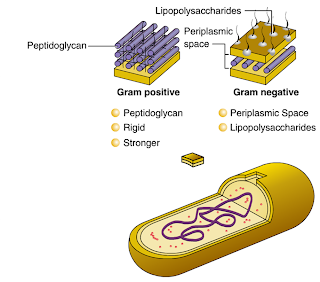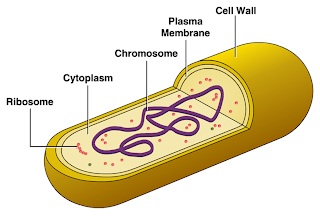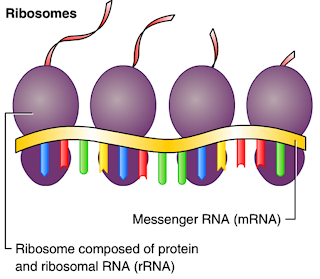Based on differences in the cell wall structure the kingdom prokaryote is divided into four of divisions:-
· Gram positive cell walls.
· Gram negative cell walls.
· Cells without walls.
· Cells with unusual walls.
The bacterial sub-types are next classified into genera related to genus and species.
Members
of a genus share the same heredity; however they different from each
other in the certain morphological and behavioral ways; for example the
early human and modern human belong to the same genus; other level of
species; classification of bacteria and humans differs; in humans and
other animals the terms species refers to a natural population that
cannot successfully breed with another group like (Neanderthal)
and modern humans; in contrast bacteria within a species are similar to
another as one human is similar to another human; finally some
bacterial species may be divided further into strains that share a
particular characteristic but it is not common to the rest of the
species; individuals of the same strain are equivalent to identical
twins since their old descendants of the same parental cell; in clinical
medicine the shared characteristic that define the particulars strain
is often resistance to an antibiotic to which the species was one
susceptible; the relationship of individual bacteria to another is often
described by a system of binomial nomenclature in which the name
for a species of bacteria consists of two parts both of them usually in
Latin or Greek; in the bacterial species named “Streptococcus pneumoniae”; thus “Streptococcus” is the genus and “pneumoniae”
represents the species; in stand of usage; the genus is always
capitalized while the species is not; additionally the genus name is
written note as first time it appear in a document that is an
abbreviated as a single initial thereafter “Streptococcus pneumoniae” becomes “S. pneumoniae”.
The major characteristics used to classify bacteria into genus and species are:-
· Cell shape and arrangement.
· Gram stain reaction.
· Oxygen requirements.
· Nutritional and metabolic characteristics.
Differences in cell shape and arrangement provide an initial clue to the identity of the bacterial genus and species.
The three basic shapes of bacterial cells are:-
- Coccus (round).
- Bacillus (rod shaped).
- Spirochetes (spiral).
Some coccoid bacteria or cocci
exist as single cells; however the when other cocci divide and
reproduce; individual bacteria remain attached to the each other; these
group include pairs of a cells (Diplococci); chains of cells (Streptococci) and clusters of cells (Staphylococci);
A major characteristics for classifying bacteria is the gram stain reaction which distinguishes two types of bacterial cell walls; grams stain dye process stain gram positive bacteria dark violet and gram negative bacteria red.
Due
to several layers of peptidoglycans network which is made up of amino
acids and simple sugar molecules linked by chemical bridges; the cell
walls of gram positive bacteria are more rigid and stronger than those
gram negative bacteria; in contrast gram negative cell walls are more
vulnerable to breakage than the thicker, strong walls of gram positive
cells.
However
a gram negative cells are quite complex; between the cell wall and
outer membrane and the cytoplasmic membrane of gram negative cells is an
enzyme filled gel compartment called periplasm; impeded in the
gel a small peptidoglycans backbone to provide some strength to the
wall; more importantly gram negative cell walls contain Lipopolysaccharides molecules
made of sugars and fats that is not found in most gram positive cell
walls; these molecules are involved in the formation of toxins that can
be harmful to the human upon their release.
Bacteria
differ in their need for and tolerance of oxygen on the basis of
whether they can use oxygen for their growth and metabolic processes;
bacteria are classified generally as:-
· Aerobic or aerobes which use oxygen.
· Anaerobic or anaerobes which do not use oxygen.
Aerobic
bacteria are fragile since they require oxygen for life and the loss of
oxygen in their environment kill them; some aerobes are classified as Microaerophilic
because they require oxygen in a concentration lower than that present
in the atmosphere; in contrast many anaerobes are less fragile in
particular Facultative anaerobes which use oxygen when it is available; and can survive without it (most adaptive bacteria).
Anaerobes also include Aerotolerant and Obligate
bacteria; aerotolerant anaerobes cannot use oxygen but they usually not
damaged by oxygen; obligates anaerobes are unable to use oxygen and are
damaged by oxygen.
Carbohydrate metabolism
is another distinguishing factor used in classifying bacteria; for
example among number of similar bacteria that inhabit the human
intestinal tract; only certain species metabolize carbohydrates such as
lactose - a milk derived sugar -; therefore the presence of intestinal
gas a byproduct of lactose metabolism indicates the presence of these
specific bacteria.








